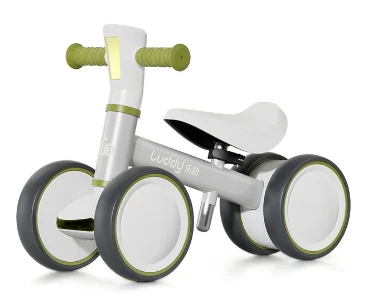
- Afrikaans
- Albanian
- Amharic
- Arabic
- Armenian
- Azerbaijani
- Basque
- Belarusian
- Bengali
- Bosnian
- Bulgarian
- Catalan
- Cebuano
- Corsican
- Croatian
- Czech
- Danish
- Dutch
- English
- Esperanto
- Estonian
- Finnish
- French
- Frisian
- Galician
- Georgian
- German
- Greek
- Gujarati
- Haitian Creole
- hausa
- hawaiian
- Hebrew
- Hindi
- Miao
- Hungarian
- Icelandic
- igbo
- Indonesian
- irish
- Italian
- Japanese
- Javanese
- Kannada
- kazakh
- Khmer
- Rwandese
- Korean
- Kurdish
- Kyrgyz
- Lao
- Latin
- Latvian
- Lithuanian
- Luxembourgish
- Macedonian
- Malgashi
- Malay
- Malayalam
- Maltese
- Maori
- Marathi
- Mongolian
- Myanmar
- Nepali
- Norwegian
- Norwegian
- Occitan
- Pashto
- Persian
- Polish
- Portuguese
- Punjabi
- Romanian
- Russian
- Samoan
- Scottish Gaelic
- Serbian
- Sesotho
- Shona
- Sindhi
- Sinhala
- Slovak
- Slovenian
- Somali
- Spanish
- Sundanese
- Swahili
- Swedish
- Tagalog
- Tajik
- Tamil
- Tatar
- Telugu
- Thai
- Turkish
- Turkmen
- Ukrainian
- Urdu
- Uighur
- Uzbek
- Vietnamese
- Welsh
- Bantu
- Yiddish
- Yoruba
- Zulu
Jan . 30, 2025 01:26 Back to list
bicycle for kids 3 years
Choosing the perfect bicycle for a 3-year-old can be a bit overwhelming for parents trying to blend safety, development, and fun. At such an impressionable age, cycling is not just a recreational activity; it plays a crucial role in a child’s physical and cognitive development. Delving into the world of kids' bicycles, we unfold a blend of expert recommendations, firsthand experiences, and authoritative insights to guide parents in making the best decision.
Apart from the bicycle's construction and specs, creating enjoyable experiences holds significance. A personal anecdote from a parent recounts how adding a colorful basket and handlebar streamers turned mundane family rides into exciting adventures. Just like adults, children are drawn to aesthetics. A bike that appeals visually can foster enthusiasm for its use. Educationally, cycling also sets foundational skills in motion. Studies indicate that children who cycle regularly exhibit improved attention spans, better problem-solving abilities, and enhanced emotional stability. These are pivotal developmental gains that underscore the role of cycling beyond mere play. Parents frequently weigh in on price vs. quality. Investing in a slightly higher-end model often correlates with better safety, durability, and customization. Seasoned cyclists advocate purchasing from specialized bike shops where expert guidance is available. Furthermore, these outlets usually offer after-sales support, a testament to the brand’s credibility and belief in their product. Lastly, fostering trust in a child's ability and the product is indispensable. Parents should express confidence in their child's capability to handle the bike, nurturing independence. A trustful spirit further extends to choosing reputable brands endorsed by experts, ensuring peace of mind that the child is in good hands—literally and figuratively. In conclusion, the journey to selecting the right bicycle for a child aged three is as much about trusting professional and personal insights as it is about technical specifications. The blend of safety, functionality, and engaging design ensures that parents nurture their child's developmental journey on two wheels. It's not merely buying a bicycle; it's providing an avenue for growth, exploration, and the sheer joy of cycling.


Apart from the bicycle's construction and specs, creating enjoyable experiences holds significance. A personal anecdote from a parent recounts how adding a colorful basket and handlebar streamers turned mundane family rides into exciting adventures. Just like adults, children are drawn to aesthetics. A bike that appeals visually can foster enthusiasm for its use. Educationally, cycling also sets foundational skills in motion. Studies indicate that children who cycle regularly exhibit improved attention spans, better problem-solving abilities, and enhanced emotional stability. These are pivotal developmental gains that underscore the role of cycling beyond mere play. Parents frequently weigh in on price vs. quality. Investing in a slightly higher-end model often correlates with better safety, durability, and customization. Seasoned cyclists advocate purchasing from specialized bike shops where expert guidance is available. Furthermore, these outlets usually offer after-sales support, a testament to the brand’s credibility and belief in their product. Lastly, fostering trust in a child's ability and the product is indispensable. Parents should express confidence in their child's capability to handle the bike, nurturing independence. A trustful spirit further extends to choosing reputable brands endorsed by experts, ensuring peace of mind that the child is in good hands—literally and figuratively. In conclusion, the journey to selecting the right bicycle for a child aged three is as much about trusting professional and personal insights as it is about technical specifications. The blend of safety, functionality, and engaging design ensures that parents nurture their child's developmental journey on two wheels. It's not merely buying a bicycle; it's providing an avenue for growth, exploration, and the sheer joy of cycling.
Next:
Latest news
-
The Ultimate Kids' Four-Wheeler Experience
NewsJul.09,2025
-
The Ultimate Guide to Mountain Bikes: Gear Up for Your Ride
NewsJul.09,2025
-
The New Age of Cycling: Electric Bikes for Every Rider
NewsJul.09,2025
-
The Best Kids Bicycles: Ride in Style and Safety
NewsJul.09,2025
-
The Best 3-Wheel Scooters for Kids: Fun, Safety, and Adventure
NewsJul.09,2025
-
Revolutionize Your Ride: Affordable Electric Bikes
NewsJul.09,2025
-
Finding the Perfect Mountain Bike for Every Rider
NewsJul.09,2025



